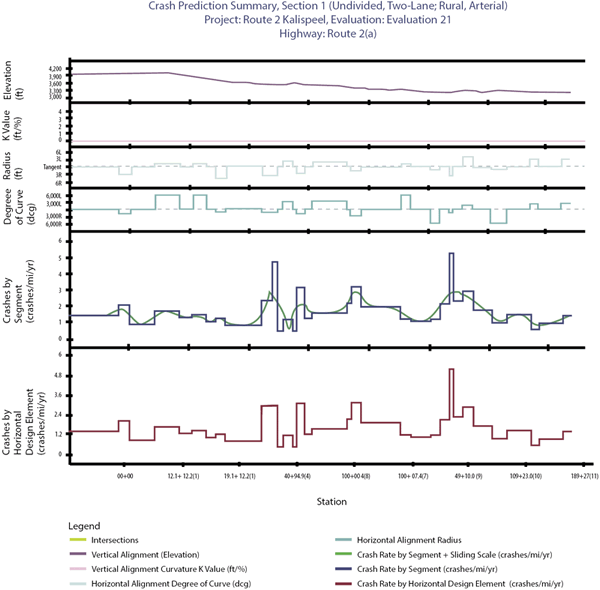The primary application of IHSDM is as a decision-support tool that can be used to provide a quantitative assessment of the safety and operational implications of various design features. The results of IHSDM support decision making in the highway design process.(2) It is comprised of a suite of software analysis tools that include the following six modules:
IHSDM is available for free download from the IHSDM web site. Learn more here: https://highways.dot.gov/research/safety/interactive-highway-safety-design-model/software-download-install. Other information about IHSDM can be found at: www.fhwa.dot.gov/research/tfhrc/projects/safety/comprehensive/ihsdm/
- Policy Review Module (PRM) – Checks the geometric design elements against selected design policy values.
- Crash Prediction Module (CPM) – Estimates the frequency and severity of crashes on a roadway while taking into consideration roadway geometry and traffic characteristics as well as crash history data, if available.
- Design Consistency Module (DCM) – This module evaluates operating speed consistency between adjacent roadway elements as a measure of how well the road meets driver expectations.
- Traffic Analysis Module (TAM) – Estimates measures of traffic operations used in highway capacity and quality of service evaluations.
- Driver Vehicle Module (DVM) – Simulates driver behavior and vehicle dynamics on a two-lane highway.
- Intersection Review Module (IRM) – Reviews intersection safety and operational performance through a systematic review of design elements.
All modules are designed to be used with two-lane rural highways. Additionally, as the CPM uses the predictive method for crashes provided in Highway Safety Manual (HSM), it can evaluate additional roadway types. The following types of roadways can be evaluated using the HSM predictive methodology that constitutes the CPM:
- Two-lane rural highways (HSM Chapter 10).
- Multilane rural highways (HSM Chapter 11).
- Urban & suburban arterials (HSM Chapter 12).
- Freeway segments (HSM draft Chapter 18).
- Freeway ramps / interchanges – including ramps, C-D roads, and ramp terminals (HSM draft Chapter 19).
Although IHSDM was primarily developed as a tool to be used during the highway design process, IHSDM can be used to provide quantitative measures of roadway safety that can be used during the RSA process. These quantitative estimates provide additional information that can be used by the RSA team in addition to data typically used in the RSA process. IHSDM can be used to help diagnose safety concerns at locations within an RSA project and identify priority areas where improvements should be considered. IHSDM results are provided in the form of tables and graphs that can be tailored by the user. The output ties the analyses to location information in the form of project stationing and relates this information to key input variables affecting safety performance. Often, critical values are highlighted or flagged (see Figure 2).

Figure 2: Sample IHSDM output from CPM.
